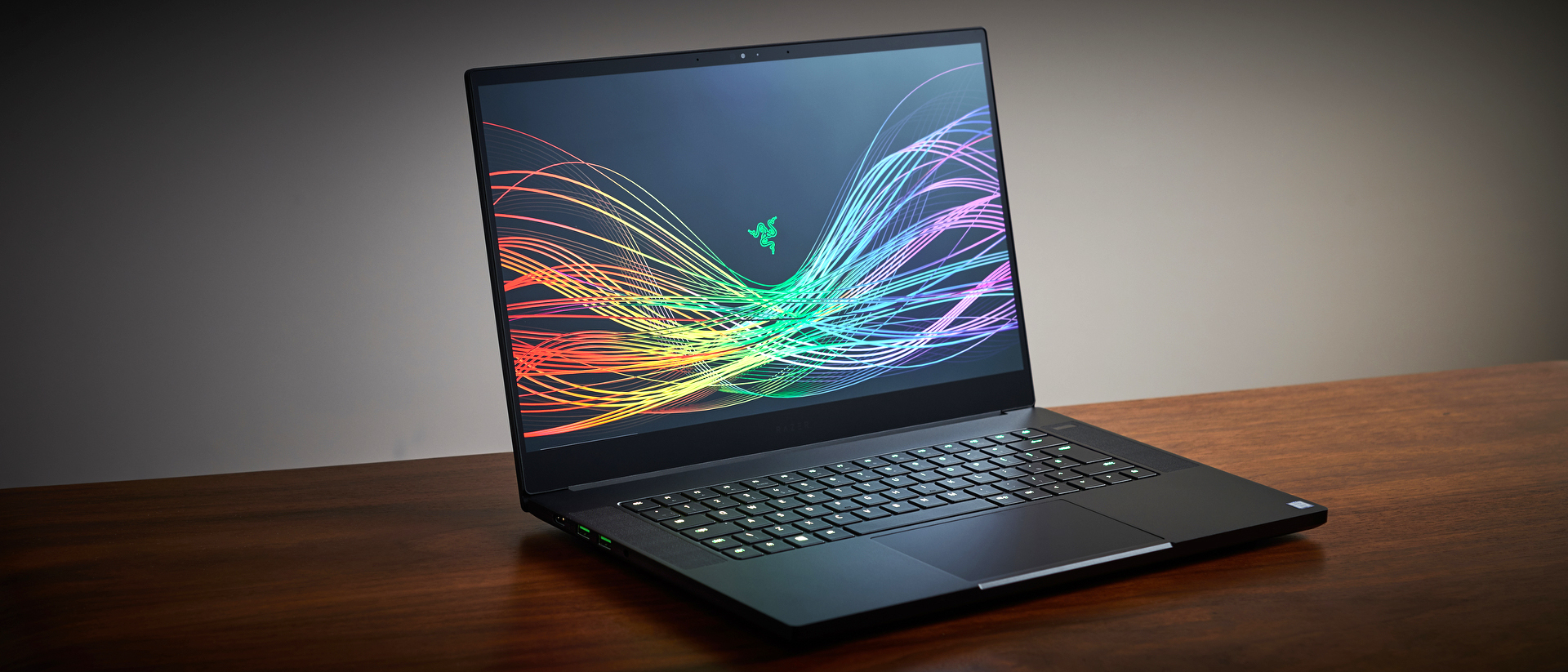TechRadar Verdict
The Razer Blade 15 Studio Edition is a brilliantly powerful workstation aimed at digital creatives. Photographers, video editors and games designers will appreciate the powerful components inside, along with the stunning 4K screen. However, it is very expensive, and that might mean that anyone who’s after a work laptop, but doesn’t quite need that level of performance, will want to look elsewhere.
Pros
- +
Powerful
- +
Beautiful screen
- +
Good amount of ports
- +
OK battery life
Cons
- -
Expensive
- -
Design won’t be for everyone
Why you can trust TechRadar
The Razer Blade 15 Studio Edition, part of Nvidia’s RTX Studio program, is packed with some of the most powerful internals on today’s market. That includes the formidable powerful RTX Quadro professional GPUs. Whether or not you’re a Razer Blade fan, the manufacturer’s fresh take on mobile creative workstations will blow you away.
This is hardly a surprise. Razer has a knack for designing incredible gaming laptops, and it only makes sense that its skills translate to building a machine aimed squarely at creative professionals. The best gaming laptops, after all, make for the best creative tools thanks to their powerful internal components. While isn’t the only company that’s putting its gaming expertise to create laptops aimed at creatives, what sets it apart is that it is one of the few laptops worthy of a coveted in Nvidia’s RTX Studio lineup.
By keeping largely the same hardware (except for the professional-grade GPU, of course) and toning down some of its more outrageous (and some could argue, garish) gaming-inspired design choices such as flashing LEDs, Razer has created a powerhouse for the creative professional seeking a mighty machine. Can this undoubtedly powerful laptop win over designers and creatives away from the likes of the MacBook Pro? The short answer is, if you need a laptop with some serious graphical grunt, then the Razer Blade 15 Studio Edition is a no-brainer.
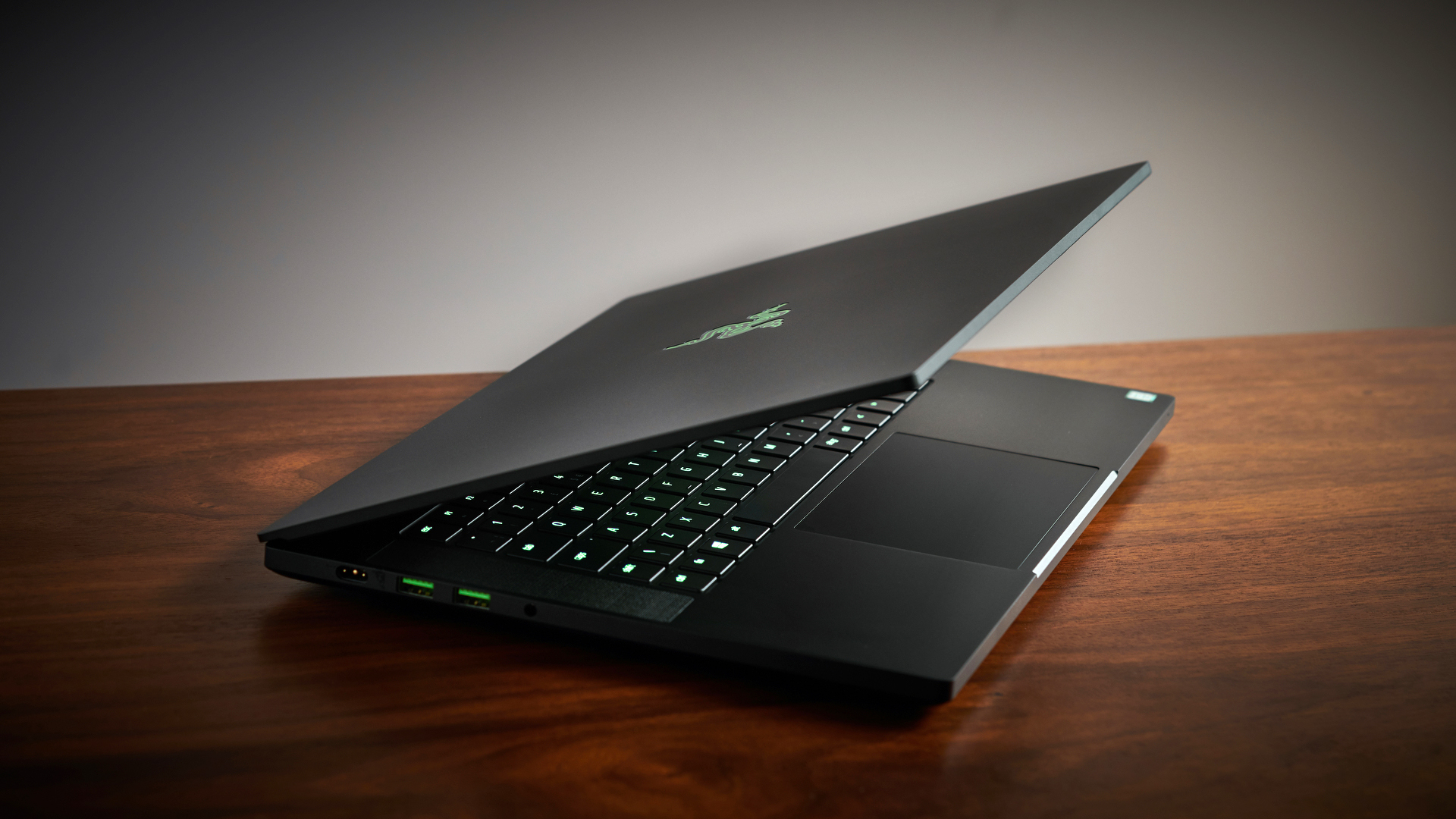
Here is the Razer Blade 15 Studio Edition configuration sent to TechRadar for review:
CPU: 2.6GHz Intel Core i7-9750H (six-core, 12MB cache, up to 4.5GHz)
Graphics: Nvidia GeForce RTX 2080 Max-Q (8GB GDDR6 VRAM)
RAM: 16GB DDR4 (2,667MHz)
Screen: 15.6-inch, Ultra HD (3,840 x 2,160) OLED Touchscreen, DCI-P3
Storage: 512GB PCIe SSD
Ports: Thunderbolt 3 (USB-C), 3 x USB-C 3.2, headset jack
Connectivity: 802.11ax Wi-Fi, Bluetooth 5
Camera: Windows Hello HD (720p) webcam
Weight: 4.83 pounds (2.19kg)
Size: 13.98 x 9.25 x 0.7 inches (355 x 235 x 0.780mm; W x D x H)
Price and availability
The Razer Blade 15 Studio Edition comes in a choice of configurations, with the maxed-out version featuring an Nvidia Quardo RTX 5000 GPU, 9th gen Intel Core i7 processor and 32GB of RAM for $3,999.99 (£3,999). At the time of writing it is not available in Australia.
While $4,000 is a hefty price tag, it’s not astronomical considering the spec. It compares quite nicely with the highest end 15-inch MacBook Pro, which comes with an 8th generation Intel Core i9 processor with 8 cores and a 2.4GHz clock speed (5.0Ghz boost), 32GB RAM, AMD Radeon Pro Vega 20 with 4GB of HBM2 memory and 4TB of SSD storage for $5,149 (£4,914, AU$7,859).
So, you’re getting a better CPU and GPU, as well as a nice 4K screen, for less money than Apple is charging. Sounds like a pretty good deal to us.
If that asking price is too high, then you can configure the Razer Blade Studio Edition with consumer graphics cards, such as the GeForce RTX 2080 Max-Q GPU. That drops the price to $2,699.99/£2,579.99 when pared with an 8th generation Intel Core i7 and 1080p 144Hz screen.
You can also get it with a 9th generation Intel Core i7 processor with either a faster display (for $2,999.99/£2,879.99), or with a OLED 4K touch screen (which is the model we have for review) at $3,299.99/£3,149.99.
Although the GeForce RTX 2080 Max-Q graphics card is primarily designed for gaming, it’s still a very capable GPU for professional use as well.
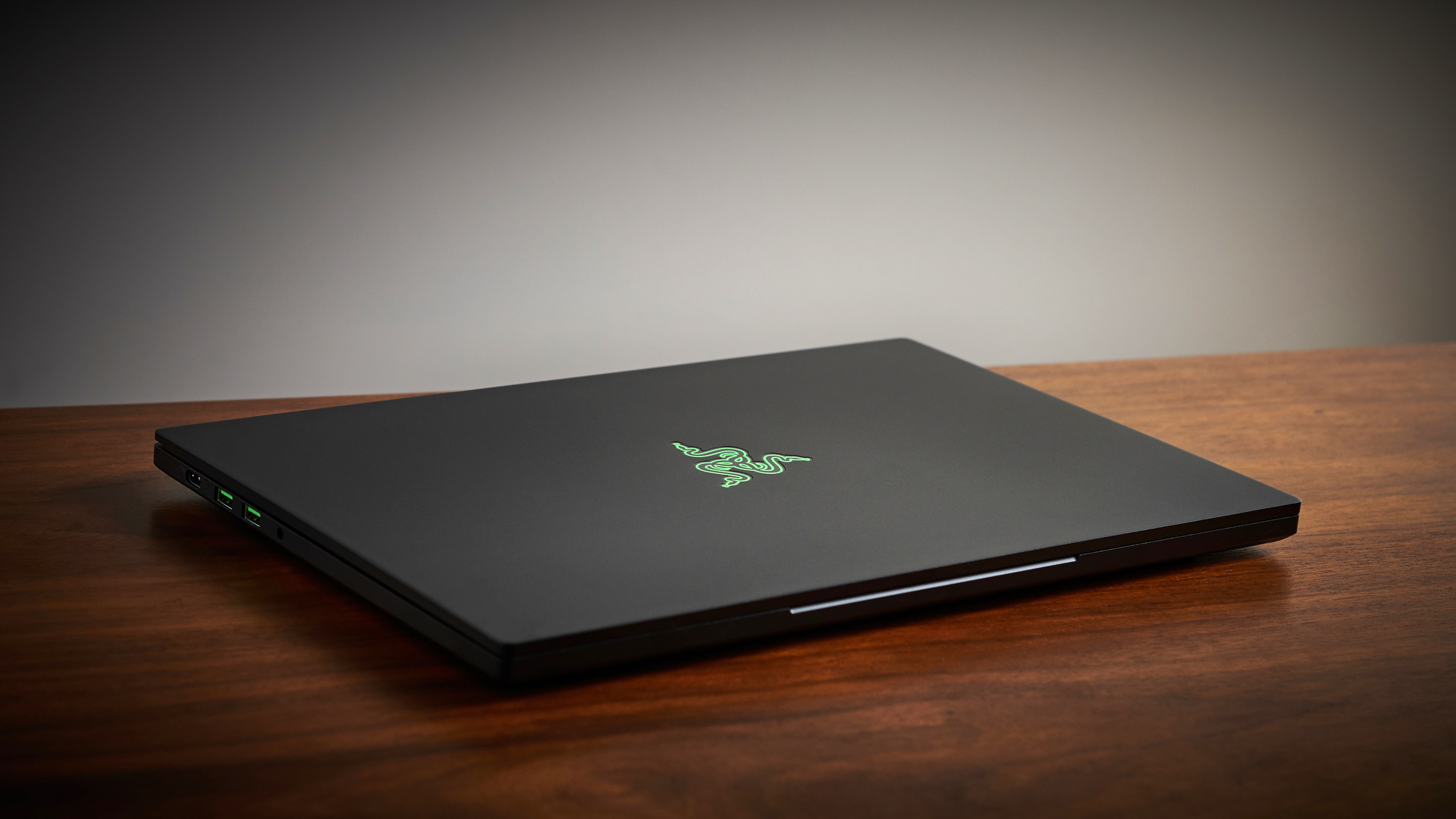
Design
In many ways, the Razer Blade 15 Studio Edition’s design is very similar to the Razer Blade 15. In fact, it’s pretty much identical. So you get that all-black unibody aluminum case, along with those unmistakable green USB ports and Razer logo on the lid which, like the gaming version, glows green when on.
If you’re worried about buying a workstation that looks like a gaming laptop, then you may be a bit put off by this, but at least the design isn’t too over-bearing, and the Razer logo isn’t too outlandish. So, you’d still get away with pulling it out during a meeting.
In fact, in our review of this year’s Razer Blade 15, we commented on how the design appeared to be more conservative than previous year’s models. So, while the Razer Blade 15 Studio Edition looks pretty identical to the gaming edition, that’s not such a bad thing. Maybe, Razer tweaked the design of the 2019 Razer Blade 15 in anticipation of the Studio Edition.
The dimensions of the Razer Blade 15 Studio Edition are also identical to the Razer Blade 15, with a footprint of 13.98 x 9.25 x 0.70 inches (355 x 235 x 17.8mm). However, the Razer Blade 15 Studio Edition is slightly heavier than its gaming counterpart at 4.83 pounds (2.19kg) versus 4.63 pounds (2.10kg).
That makes it noticeably larger and heavier than the 15-inch MacBook Pro (13.75 x 9.48 x 0.61 inches (34.93 x 24.07 x 1.55cm; W x D x H) and a weight of 4.02 pounds (1.83kg)), so if absolute portability is key, then the MacBook Pro is a better choice.
However, the Razer Blade 15 Studio Edition’s design is a clear winner of the MacBook Pro in one very vital aspect: connectivity.
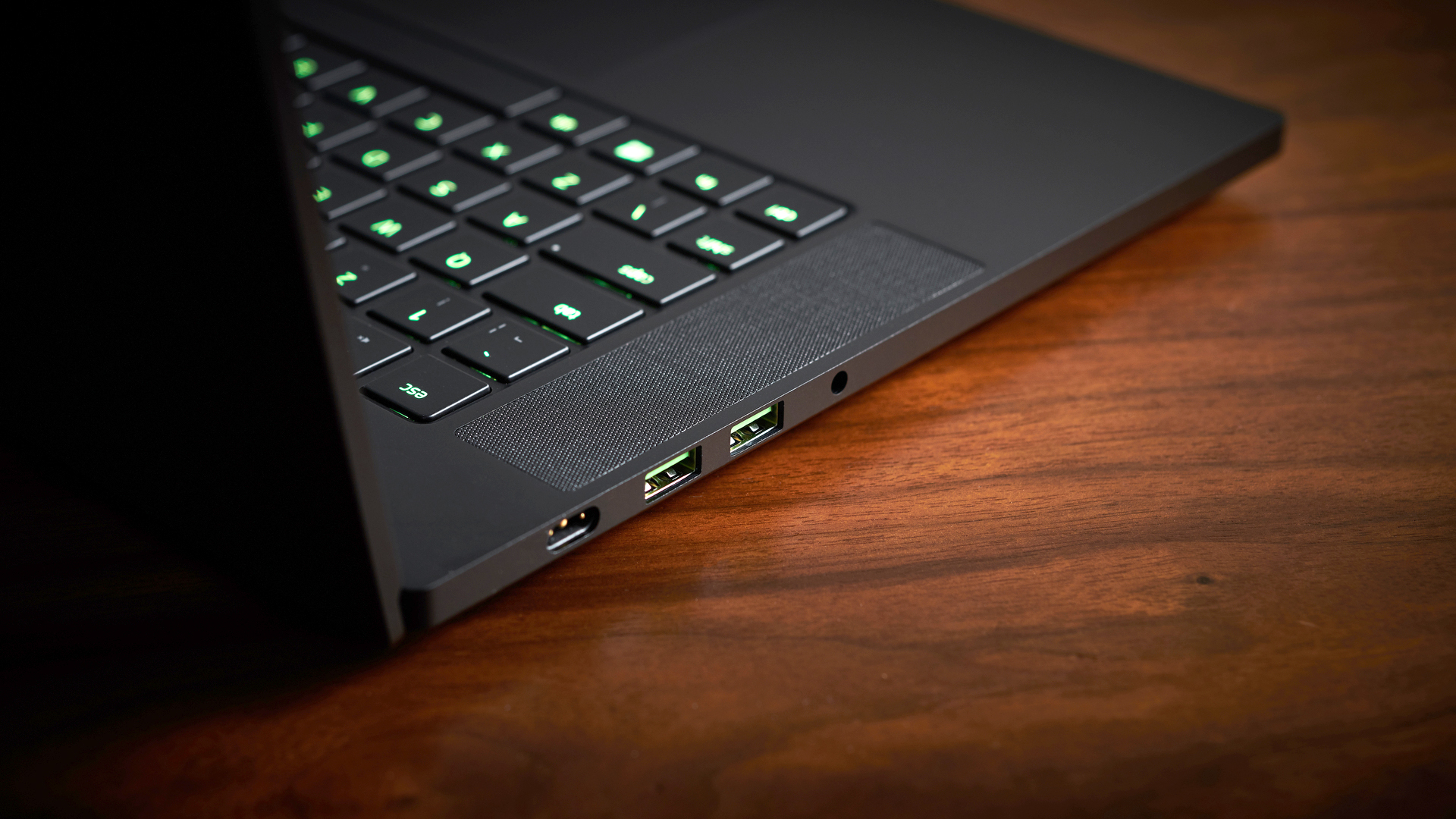
While the MacBook Pro 15-inch makes do with just four Thunderbolt 3 (USB-C) ports and a 3.5mm headphone jack, the Razer Blade 15 Studio Edition is far more generous. On the left-hand side of the laptop there’s two full-size USB 3.2 ports, along with a headphone jack and proprietary power connector, and on the right-hand side there’s another USB 3.2 port, a Thunderbolt 3 (USB-C) port, HDMI port and Mini DisplayPort.
While comparing ports between laptops isn’t the most thrilling of ways to spend your life, it’s an important consideration when looking for a workstation for professional work. The MacBook Pro's use of just Thunderbolt 3 ports means it's able to keep as thin and light as possible while still working with newer gadgets. However, if you use older hardware – such as a USB memory stick or an external hard drive – which uses USB Type A ports, then you'll have to carry an adapter: which is sold separately, doesn't look great and is yet another thing to carry around.
With the Razer Blade 15 Studio Edition, you can more easily plug in standard USB devices without messing around with an adapter. You still need one for certain things, like plugging in an Ethernet cable for wired internet, and there’s no built-in memory card reader (at least in the model we reviewed – confusingly, Razer’s website says the Blade 15 Studio Edition does come with a memory card reader).
For photographers, then, you’ll need to use an external memory card reader.
Overall, the design of the Razer Blade 15 Studio Edition is elegant and straightforward, with only a few nods to its gaming heritage. If those subtle hints are still too much for you, however, you may be disappointed that Razer didn’t go for a much more different design to differentiate from its gaming version.
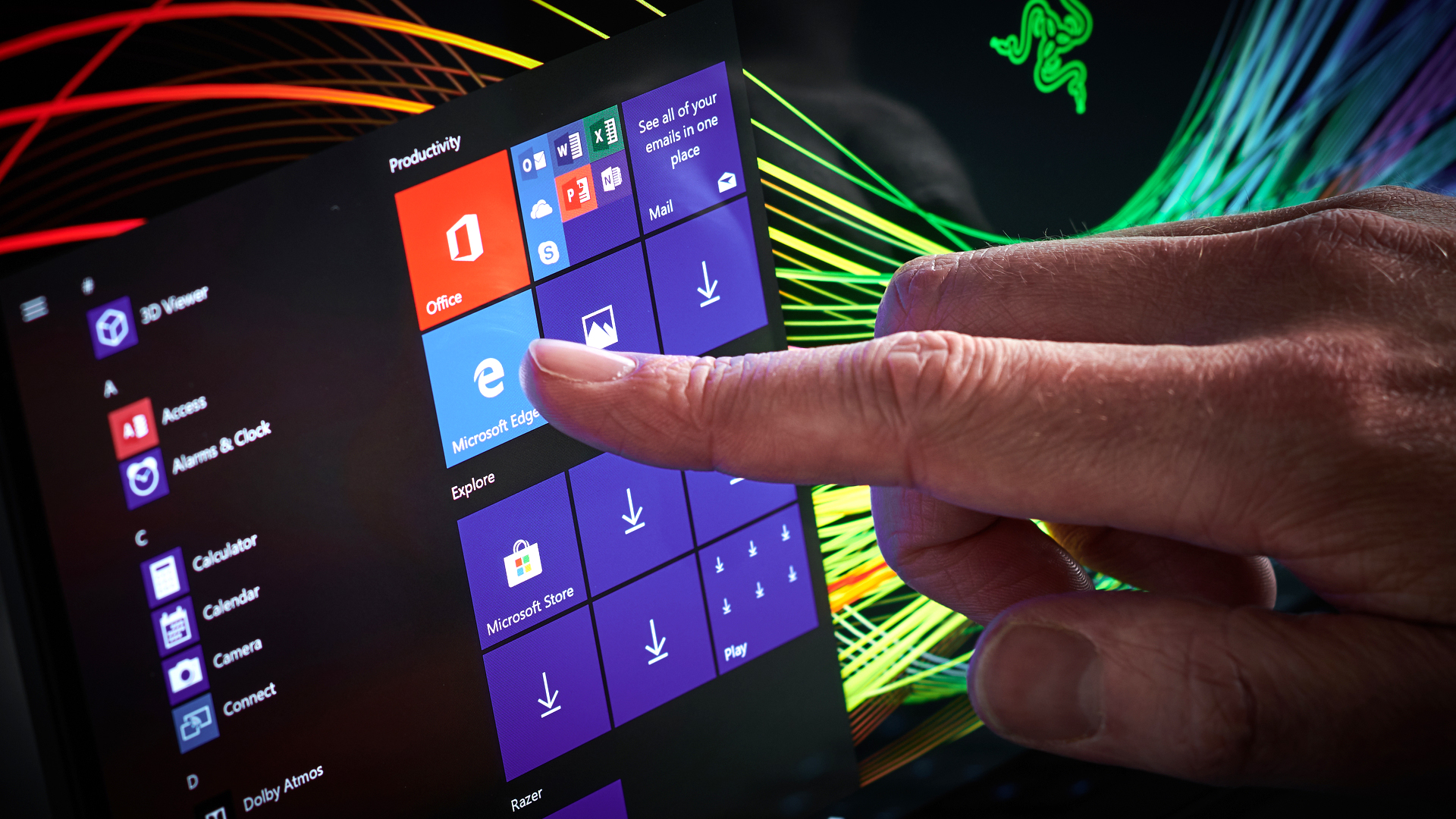
Screen
When Razer says that the screen of the Razer Blade 15 Studio Edition offers “Retina shattering accuracy,” that’s not just hyperbole, it’s also a dig at Apple and the Retina displays of its MacBooks. That’s because the Retina display of the 15-inch MacBook Pro is 2,880 x 1,800, while the Razer Blade 15 Studio Edition features a 4K screen at 3,840 x 2,160.
Not only does the screen of the Razer Blade 15 Studio Edition beat the MacBook Pro’s in terms of resolution, but it’s also OLED, which offers stunning color vibrancy and contrast ratios, and it’s a touchscreen to boot.
Put them side by side and there’s no competition – the screen of the Razer Blade 15 Studio Edition absolutely blows away that of the MacBook Pro.
The screen also has 100% DCI-P3 color gamut, which is essential for any creative professional (such as video editors) who require accurate color reproduction on their workstations.
The display is also factory calibrated, and it really is a highlight of the Razer Blade 15 Studio Edition, and for many people will make the high price worth it.
With thin bezels on either side of the display, it’s clear that Razer knows it’s the main attraction, and has ensured it’s easily the focal point of the laptop.

Matt is TechRadar's Managing Editor for Core Tech, looking after computing and mobile technology. Having written for a number of publications such as PC Plus, PC Format, T3 and Linux Format, there's no aspect of technology that Matt isn't passionate about, especially computing and PC gaming. He’s personally reviewed and used most of the laptops in our best laptops guide - and since joining TechRadar in 2014, he's reviewed over 250 laptops and computing accessories personally.
